Sexually Transmitted Infections in the US

Each year there are about 20 million new cases of sexually transmitted infections (STIs) in the United States. More than 2.5 million cases of chlamydia, gonorrhea, and syphilis were reported in 2022. Adolescents, young adults, and men who have sex with men are at higher risk of getting STIs, and people who have STIs may be at higher risk of getting HIV. There are several sexually transmitted infections that are prevalent in the US. Some of the most common ones include:
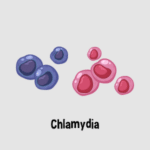 Chlamydia: Chlamydia is the most reported bacterial STI in the United States and is spread through sexual contact with a partner. Women with symptoms may notice abnormal vaginal discharge or a burning sensation while peeing, and men may experience discharge from their penis, burning while peeing, or pain and swelling in one or both testicles.
Chlamydia: Chlamydia is the most reported bacterial STI in the United States and is spread through sexual contact with a partner. Women with symptoms may notice abnormal vaginal discharge or a burning sensation while peeing, and men may experience discharge from their penis, burning while peeing, or pain and swelling in one or both testicles.
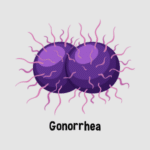 Gonorrhea: Gonorrhea is transmitted through sexual contact and can also be spread from mother to baby during childbirth. Many infected people are asymptomatic, but gonorrhea can be characterized by abnormal vaginal discharge, discharge from the urethra, or itching, soreness, or bleeding of the rectum.
Gonorrhea: Gonorrhea is transmitted through sexual contact and can also be spread from mother to baby during childbirth. Many infected people are asymptomatic, but gonorrhea can be characterized by abnormal vaginal discharge, discharge from the urethra, or itching, soreness, or bleeding of the rectum.
 Syphilis: Syphilis infections can spread by direct contact with a syphilis sore during sex or can be spread from an infected mother to her unborn baby. The infection develops in stages (primary, secondary, latent, and tertiary), and each stage can have different signs and symptoms.
Syphilis: Syphilis infections can spread by direct contact with a syphilis sore during sex or can be spread from an infected mother to her unborn baby. The infection develops in stages (primary, secondary, latent, and tertiary), and each stage can have different signs and symptoms.
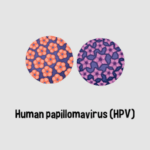 HPV: HPV is spread by having sex with someone who has the human papilloma virus. Most people do not know when they have an infection, or they develop genital warts. HPV infections can also cause cervical and other cancers.
HPV: HPV is spread by having sex with someone who has the human papilloma virus. Most people do not know when they have an infection, or they develop genital warts. HPV infections can also cause cervical and other cancers.
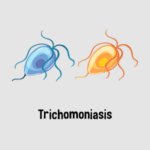 Trichomoniasis: This infection is caused by a parasite called Trichomonas vaginalis. In women, this parasite mainly infects the vagina and urethra, while in men the infection most commonly infects the urethra. Symptoms of trichomoniasis include abnormal discharge from the vagina or penis, pain or discomfort while urinating, or soreness, swelling, and redness of the genitals.
Trichomoniasis: This infection is caused by a parasite called Trichomonas vaginalis. In women, this parasite mainly infects the vagina and urethra, while in men the infection most commonly infects the urethra. Symptoms of trichomoniasis include abnormal discharge from the vagina or penis, pain or discomfort while urinating, or soreness, swelling, and redness of the genitals.
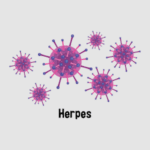 Herpes: Herpes is transmitted by having sex with someone who is infected. Herpes infections are caused by herpes simplex virus type 1 (HSV-1) or herpes simplex virus type 2 (HSV-2). HSV-1 is more commonly associated with oral herpes while HSV-2 typically causes genital herpes. Symptoms of herpes infections may present as a pimple like bump in mild cases, or as sores/blisters around the genitals, rectum, or mouth in more progressed cases.
Herpes: Herpes is transmitted by having sex with someone who is infected. Herpes infections are caused by herpes simplex virus type 1 (HSV-1) or herpes simplex virus type 2 (HSV-2). HSV-1 is more commonly associated with oral herpes while HSV-2 typically causes genital herpes. Symptoms of herpes infections may present as a pimple like bump in mild cases, or as sores/blisters around the genitals, rectum, or mouth in more progressed cases.
Why is STI screening important?
STIs often do not show symptoms, so regular screening and testing is a necessary measure for timely diagnosis and treatment. If the infections cannot be properly and accurately diagnosed, they will not be properly treated. Without proper treatment, several complications can arise, such as pelvic inflammatory disease (PID), tubal or ectopic pregnancy, infertility, and increased risk of cancer and HIV infection. It is important for sexually active patients to be regularly screened to prevent complications that might arise from undiagnosed infections.
Benefits of PCR Testing for STIs
Healthcare providers can diagnose STIs through physical examination, bacterial culture, or molecular testing. Diagnosis by physical examination can be difficult due to multiple overlapping symptoms of different infections, and bacterial culture can detect extremely low numbers of bacteria, but it has a turnaround time of a few days. Using molecular methods of detection, specifically PCR, reduces turnaround time and increases sensitivity and specificity. PCR testing for STIs improves treatment decision making, prevents complications, and reduces unnecessary use of antibiotics.
Other Seegene Blog Posts
Take a look at our other blog posts here: Seegene Blog Posts- For any inquiries, please contact us by clicking this link
Other Resources
-
Molecular methods in the laboratory diagnosis of sexually transmitted infections
https://www.ncbi.nlm.nih.gov/pmc/articles/PMC4555911/#:~:text=With%20the%20rise%20of%20the,or%20are%20difficult%20to%20cultivate -
CDC’s 2022 STI Surveillance Report underscores that STIs must be a public health priority
https://www.cdc.gov/std/statistics/2022/default.htm -
National Overview of STIs, 2022
https://www.cdc.gov/std/statistics/2022/overview.htm
